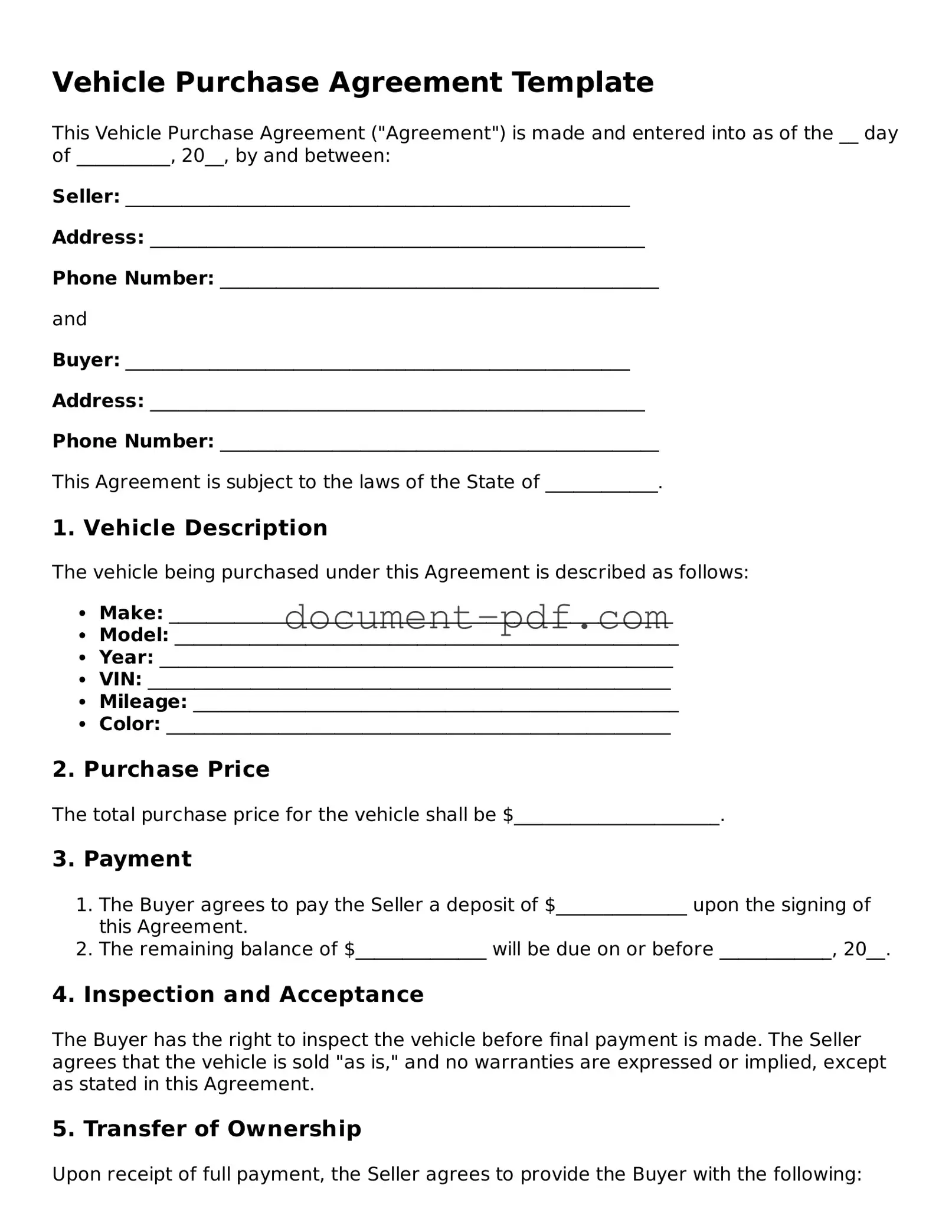Vehicle Purchase Agreement Template
This Vehicle Purchase Agreement ("Agreement") is made and entered into as of the __ day of __________, 20__, by and between:
Seller: ______________________________________________________
Address: _____________________________________________________
Phone Number: _______________________________________________
and
Buyer: ______________________________________________________
Address: _____________________________________________________
Phone Number: _______________________________________________
This Agreement is subject to the laws of the State of ____________.
1. Vehicle Description
The vehicle being purchased under this Agreement is described as follows:
- Make: ______________________________________________________
- Model: ______________________________________________________
- Year: _______________________________________________________
- VIN: ________________________________________________________
- Mileage: ____________________________________________________
- Color: ______________________________________________________
2. Purchase Price
The total purchase price for the vehicle shall be $______________________.
3. Payment
- The Buyer agrees to pay the Seller a deposit of $______________ upon the signing of this Agreement.
- The remaining balance of $______________ will be due on or before ____________, 20__.
4. Inspection and Acceptance
The Buyer has the right to inspect the vehicle before final payment is made. The Seller agrees that the vehicle is sold "as is," and no warranties are expressed or implied, except as stated in this Agreement.
5. Transfer of Ownership
Upon receipt of full payment, the Seller agrees to provide the Buyer with the following:
- The signed title to the vehicle.
- A bill of sale.
6. Governing Law
This Agreement shall be governed by and construed in accordance with the laws of the State of ____________.
7. Signatures
By signing below, both parties agree to the terms and conditions set forth in this Vehicle Purchase Agreement.
Seller's Signature: _________________________ Date: ________________
Buyer's Signature: _________________________ Date: ________________
